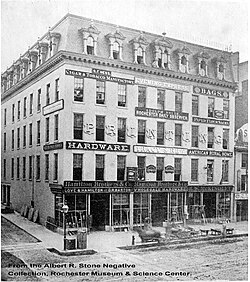
Frederick Douglass was an American social reformer, abolitionist, orator, writer, and statesman. After escaping from slavery in Maryland, he became a national leader of the abolitionist movement in Massachusetts and New York, during which he gained fame for his oratory and incisive antislavery writings. Accordingly, he was described by abolitionists in his time as a living counterexample to enslavers' arguments that enslaved people lacked the intellectual capacity to function as independent American citizens. Northerners at the time found it hard to believe that such a great orator had once been enslaved. It was in response to this disbelief that Douglass wrote his first autobiography.

Rochester is a city in the U.S. state of New York, the seat of Monroe County, Rochester is the fourth most populated Municipality in New York with a population of 211,328 at the 2020 United States census. Located in Western New York, the city of Rochester forms the core of a larger metropolitan area with a population of 1 million people, across six counties. The city was one of the United States' first boomtowns, initially due to the fertile Genesee River Valley, which gave rise to numerous flour mills, and then as a manufacturing center, which spurred further rapid population growth.

Frederick Douglass - Greater Rochester International Airport is a public airport located within the City of Rochester, three miles (4.8 km) southwest of Downtown, in Monroe County, New York, United States. It is owned and operated by Monroe County. It is the fifth-busiest airport in the state of New York and the third-busiest outside of the New York City metropolitan area. The airport is home to the 642nd Aviation Support Battalion, part of the 42nd Infantry Division.
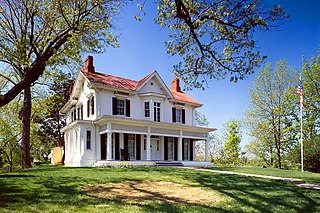
The Frederick Douglass National Historic Site, administered by the National Park Service, is located at 1411 W Street, SE, in Anacostia, a neighborhood east of the Anacostia River in Southeast Washington, D.C. United States. Established in 1988 as a National Historic Site, the site preserves the home and estate of Frederick Douglass, one of the most prominent African Americans of the 19th century. Douglass lived in this house, which he named Cedar Hill, from 1877–1878 until his death in 1895. Perched on a hilltop, the site offers a sweeping view of the U.S. Capitol and the Washington, D.C., skyline.
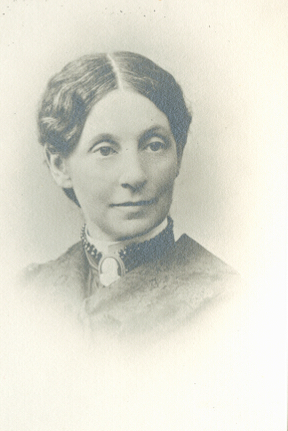
Helen Pitts Douglass (1838–1903) was an American suffragist, known for being the second wife of Frederick Douglass. She also created the Frederick Douglass Memorial and Historical Association, which became the Frederick Douglass National Historic Site.

The North Star was a nineteenth-century anti-slavery newspaper published from the Talman Building in Rochester, New York, by abolitionist Frederick Douglass. The paper commenced publication on December 3, 1847, and ceased as The North Star in June 1851, when it merged with Gerrit Smith's Liberty Party Paper to form Frederick Douglass' Paper. At the time of the Civil War, it was Douglass' Monthly.

P22 Type Foundry is a digital type foundry and letterpress printing studio based in Rochester, New York. The company was created in 1994 in Buffalo, New York by co-founders Richard Kegler and Carima El-Behairy. The company is best known for its type designs, which have appeared in films and on commercial products. The P22 Type Foundry retail font collection specializes in historical letterforms inspired by art, history, and science that otherwise have never been available previously in digital form. P22 works with museums and foundations to ensure the development of accurate historical typefaces, and with private clients to create custom bespoke fonts.
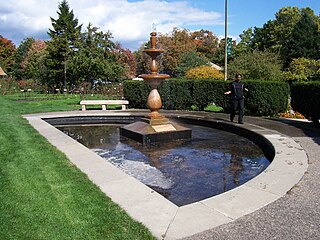
Maplewood Park, also known as Seneca Park West, is a landscaped public park in Rochester, New York, situated between Lake Avenue and the Genesee River. The two-mile-long (3.2 km) park features many trails along the river gorge and the river bank below, scenic views of two waterfalls and a nationally accredited Rose Garden.
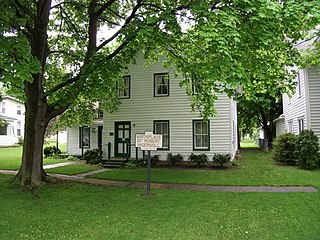
Robert Ingersoll Birthplace, also known as Robert Green Ingersoll Birthplace Museum, is a historic home located at Dresden in Yates County, New York. It is a Federal-style structure that consists of a two-story, three-bay, gable-roofed central block with a two-part, 1+1⁄2-story saltbox ell on the west side. The central block and the front portion of the ell were built separately and joined sometime before they were moved to their present location prior to 1833. The rear portion of the ell was added on-site at the current location at an unknown date.

The Grove, also known as Loretto Rest, is a historic house located on Grove Court in Cold Spring, New York, United States. It was built as the estate of Frederick Lente, surgeon at the nearby West Point Foundry and later a founder of the American Academy of Medicine, in the mid-19th century. The Italian-villa design, popular at the time, was by the prominent architect Richard Upjohn. In 2008 it was listed on the National Register of Historic Places.

The Alma Thomas House is an historic house, located at 1530 15th Street, N.W., in the Logan Circle neighborhood.
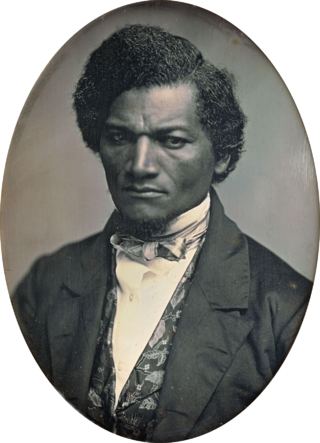
"What to the Slave Is the Fourth of July?" was a speech delivered by Frederick Douglass on July 5, 1852, at Corinthian Hall in Rochester, New York, at a meeting organized by the Rochester Ladies' Anti-Slavery Society. In the address, Douglass states that positive statements about American values, such as liberty, citizenship, and freedom, were an offense to the enslaved population of the United States because they lacked those rights. Douglass referred not only to the captivity of enslaved people, but to the merciless exploitation and the cruelty and torture that slaves were subjected to in the United States.

Lucy Newhall Colman was a freethinker, abolitionist and feminist campaigner. She campaigned for racial justice and for the education of African Americans.

The National Abolition Hall of Fame and Museum is a museum located in Peterboro, New York, that honors American abolitionists by showcasing their work to end slavery, and the legacy of their struggle: the drive to end racism.
Sarah Davids Bills Fish (1798–1868) was a 19th-century American suffragist and abolitionist. She has been variously known as Sarah Fish, Sarah D. Fish, Sarah David Bills, and Sarah David Bills Fish.

A statue of Frederick Douglass sculpted by Sidney W. Edwards, sometimes called the Frederick Douglass Monument, was installed in Rochester, New York in 1899 after it was commissioned by the African-American activist John W. Thompson. According to Visualising Slavery: Art Across the African Diaspora, it was the first statue in the United States that memorialized a specific African-American person.
Abbie K. Mason was a Black American suffragist. She was known as the president of the Woman's Christian Temperance Union (WCTU) and taught the lessons of Fredrick Douglass at the Memorial African Methodist Episcopal Zion Church of Rochester, New York.
Corinthian Hall was a meeting hall in Rochester, New York, that was the site of significant speeches and other events. It was built in 1849 and was destroyed by a fire in 1898.
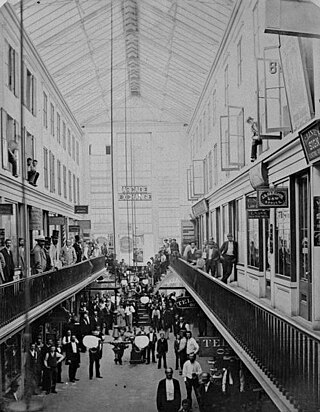
The Reynolds Arcade (1829–1932) was a commercial building constructed by Abelard Reynolds in 1829 on Buffalo Street in Rochester, New York. According to Joseph W. Barnes, a Rochester City Historian, it was, "the center of Rochester downtown life for more than a century." After it was demolished, an office building with the same name was constructed on the same site.
